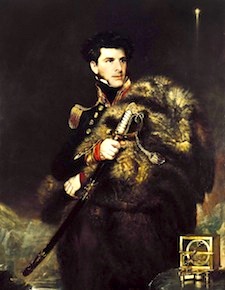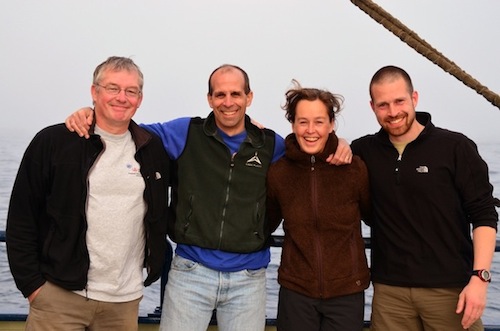About The Expedition

On 26 July, 2012 our ocean-science party, with members from Iceland, Norway, Germany, the Netherlands, and the United States, will board the northbound British Royal Research Ship James Clark Ross in Reykjavik, Iceland for a thirty-day expedition along the East Greenland Coast to the High-Arctic island of Spitsbergen. We’ll need to come close aboard that fantastically wild Greenland coast in order to understand this component of the vital avenues of circulation in Arctic waters—on which world climate stability depends. This team, aboard other research vessels, has studied other Arctic avenues, out in the Iceland, Irminger and Greenland Seas, but this time we’re going much farther north, into the ice. That’s why Chief Scientist Robert Pickart chose the Ross. She’s an icebreaker—within certain limits.
Bob’s choice is fitting in a less concrete sense. We’re heading to the far north on a voyage of ocean exploration aboard a ship named for one of giants in the history of polar exploration. James Clark Ross, later said to be the handsomest man in the Royal Navy, sailed into the Canadian Arctic—at age eleven—in search of the Northwest Passage with his uncle, Sir John Ross. Then between 1819 and 1827, James Clark served on four High-Arctic expeditions led by William Parry. Having proved his prowess, promoted to captain in 1845, he headed to the other end of the world, to Antarctica where he did his greatest work. He discovered the Ross Sea and Ross Ice Sheet, Victoria Land. He discovered and named Mt. Erebus and Mt. Terror after his ships (they later disappeared back in the Arctic under John Franklin’s command) while mapping coastlines no human being had ever seen before.
 |
I like the idea that modern, big-time oceanographic research cruises are evolutionary developments of a theme born during the European Enlightenment when something entirely new in Western culture was manifesting itself in acts of exploration. If the Great Age of Exploration (Columbus, de Gamma, Magellan, Cotes, Pizarro, Drake) was about conquest and monopoly by the West over the Rest, expeditions during this so-called Second Great Age, coinciding with the birth of modern science, were motivated by the acquisition of knowledge about nature through direct observation.
Though students of the period will rightly point out that strains of paternalism and explicit assumptions of Western superiority marbled great voyages by Cook, d’Urville, Scoresby, Weddell, Bellingshausen, and Ross, their purpose was peaceable and their motivation to learn—about everything—was genuine. To record, describe, and illustrate the mass of new discoveries in biology, botany, geology, and the fledgling field of anthropology, onboard naturalists and artists were essential members of expeditions to the ends of the Earth. Aboard such legendary ships as Endeavor, Erebus and Beagle Joseph Banks, James Hooker (with Ross), and Charles Darwin launched their careers. These were scientific expeditions, in an organized sense, the first in world history.
It’s fun to imagine Captain Ross boarding his namesake with us in late July. The gear and the technology, not to mention the living conditions, aboard the James Clark Ross would likely bedazzle the great man, but I’d bet he’d soon clear his eyes and grasp the concept. It is hardly different in intent from his own; only the means have changed. But then, after a couple of watches, he’d likely notice the difference in purpose between this and his. He and his colleagues set out across great waters to reach and to compile data about new lands. We’re setting out across great waters to gather data about the water itself. Ross would be a man to appreciate that distinction, and its importance.
What follows, then, is a website devoted to this single expedition (oceanographers call it a “cruise”). In three separate mediums—still photography, video, and writing—we will seek to explain the science that leads us into these icy waters far north of the Arctic Circle, the why of the cruise; the methods by which ocean scientists measure their subject; the people, crew, technicians, and scientists who do so; and the nature of life aboard this special little self-contained world witnessed by only a few. We can offer only a vicarious expedition experience, but we will seek to render it as vividly and, with daily updates, as immediately as possible. The photographers and I view our presence aboard James Clark Ross as a privilege—and just why it is a privilege this website will illustrate.

Co-principal investigators (from left) Heddin Valdimarsson, Bob Pickart, Laura de Steur and Kjetil Våge on last year's Greenland expedition


